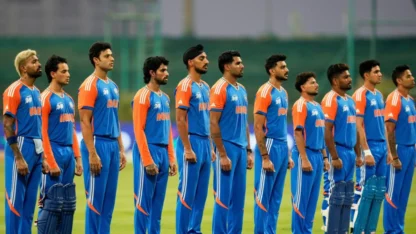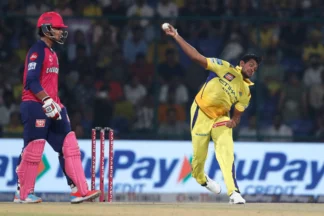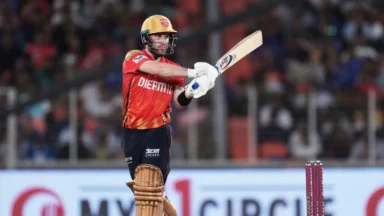The Women’s T20 World Cup 2024 has gotten off to a shaky start, with an unexpected challenge emerging on the field—dropped catches. Over the course of just the first two days, players have put down 18 chances across the four matches played, leaving teams to reconsider their fielding strategies under pressure.
Early fielding struggles across teams
From experienced players like Richa Gosh and Olivia Bell to younger talents such as Marufa Akter and Nahida Akter, fielders have struggled to hold onto relatively straightforward catches. The majority of these dropped catches have occurred during night games, when players have to contend with bright floodlights and the difficulty of tracking a high ball against the night sky.
Most of the T20 WC’s matches—13 out of 20 league games—are scheduled to start at 6pm local time, meaning nearly 70% of the tournament will be played under lights. For players unfamiliar with night games, this adds an additional challenge to an already high-pressure situation.
Data reveals higher drop rate in Women’s T20s
Statistics show that women’s T20 matches under floodlights are still a growing trend, with only about 18% of games played at night compared to 41% in men’s T20s as per ESPN. The gap in experience playing under lights may be contributing to the higher drop rates seen in women’s cricket, with women dropping 25.2% of catches in T20s since 2021, compared to men’s 17.75%.
Bangladesh vs Scotland: 7 Drops set tone for Women’s T20 World Cup
In the opening match between Bangladesh and Scotland, seven catches were put down, contributing to a scrappy encounter. Scotland’s fielders were the first to falter, dropping three relatively simple chances. Sub-fielder at point dropped a lofted shot from Nigar Sultana in the 19th over, a costly mistake. Later, Olivia Bell’s deliveries resulted in two more drops, one by Lister at deep mid-wicket and another by Slater at mid-wicket.
Bangladesh, too, struggled under the lights. In the dying moments of Scotland’s chase, Marufa Akter and Nahida Akter each dropped simple catches that could have sealed the match sooner. Additionally, a sitter was spilled by Rabeya Khan at long-on, and a tough chance behind the stumps was missed by Nigar Sultana.
Pakistan vs Sri Lanka: 5 More Catches Hit the Ground
In the second match, Pakistan and Sri Lanka combined to drop five catches. Sri Lanka’s fielders couldn’t hold onto two crucial chances, with Sachini Nisansala spilling a catch off her own bowling and Priyadharshani missing an opportunity to dismiss Sidra Amin. On Pakistan’s side, Sadia Iqbal and Tuba Hassan dropped straightforward catches, which could have put additional pressure on the Sri Lankan batters.
Despite these drops, Pakistan’s bowlers managed to restrict Sri Lanka, earning a 31-run victory. However, the fielding lapses could have made the difference had Sri Lanka found more momentum in their innings.
South Africa vs West Indies: Missed Chances Continue
In the match between South Africa and West Indies, three more catches went down. South Africa’s fielders dropped two clear opportunities, one by Annerie Dercksen at backward point and another by Ayabonga Khaka in the slips. The West Indies, too, missed a tricky chance when K Ramharack couldn’t hold onto a powerful return shot from Laura Wolvaardt.
Despite these drops, South Africa cruised to victory, thanks in part to strong batting performances by Wolvaardt and Tazmin Brits.
India vs New Zealand: Richa Ghosh’s Costly Mistake
The trend of dropped catches continued in India’s match against New Zealand, where each side missed a sitter. India’s Richa Ghosh fumbled a straightforward top-edge from Suzie Bates, while New Zealand’s Halliday dropped a full-toss hit by Deepti Sharma at mid-on.
Later, when defeat was written on the wall, New Zealand star opener Georgia Plimmer dropped Shreyanka Patil’s simple catch.
Test of Nerves under Lights and Sun
As the tournament progresses, players will need to adjust quickly to the conditions, especially with so many games set to be played under the floodlights. Teams will be hoping that this shaky start doesn’t cost them crucial matches as the Women’s T20 World Cup 2024 unfolds. Fielding improvements may be key to lifting the trophy at the end of the tournament.
Editor's Pick
 Cricket
Focus on Suryakumar Yadav & Shubman Gill in Lucknow with just 7 matches remain for T20 World Cup
Cricket
Focus on Suryakumar Yadav & Shubman Gill in Lucknow with just 7 matches remain for T20 World Cup









































































